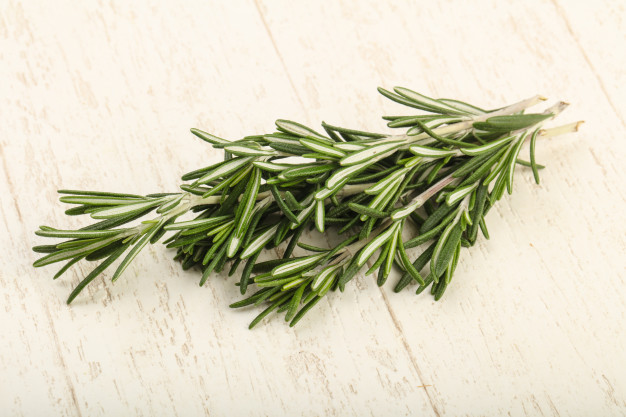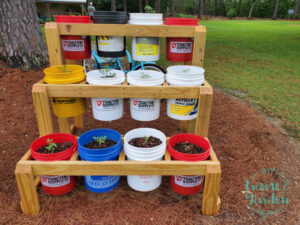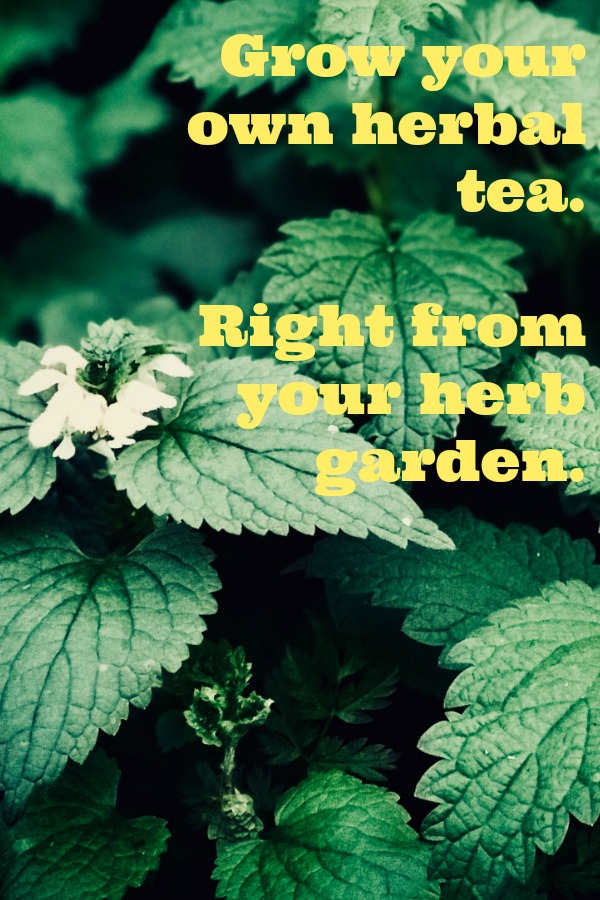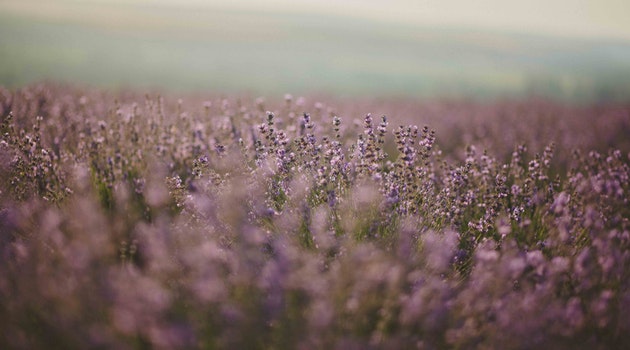Perennial herbs are easy to grow and are also low in maintenance. They’re a “plant once, grow forever” garden item, meaning they reproduce without your assistance, so you won’t have to replant.
In addition to offering a consistent harvest, these herbal plants also warm up your space, creating a welcoming and more relaxing environment. To ensure success, make sure you research each herb to establish the best-growing conditions, including the soil type.
Whether you are a novice gardener or have years of experience, it’s essential to build on your knowledge of perennial herbs.
This article will explain the following:
- Answer the most frequently asked questions about herbal gardening.
- Understand what perennial herbs actually are.
- List eighteen of the best perennial herbs to grow.
And so, before we head to the eighteen best perennial herbs to grow in your garden, here are the answers to some of the frequently asked questions.
Frequently Asked Questions About Growing Perennial Herbs
What is meant by perennial herbs?
Perennials herbs are plants that return every year without manual replant. They grow back each year by self-seeding or from their underground root system. Most of them enter dormancy in the winter season to return in spring.
Will herbs come back every year?
Perennial herbs come back every year as they spread in their territory.
Which herbs can survive the winter?
When offered protection, mint, chives, parsley, oregano, thyme, and sage can survive the cold winter temperatures and still produce flavorful foliage. Use a cloche or cold frame to cover the herbs or simply pot them up and relocate them to a sun porch or frost-free greenhouse.
Alternatively, place a thick layer of straw, shredded bark, or other coarse mulch to help with insulation, maintaining the ideal temperatures for the herbs to thrive.
Eighteen Best Perennial Herbs for Every Garden
Give these eighteen herbal species a try.
1 – Chives:
- Chives are cool-season perennials belonging to the onion family.
- They adapt well to various soil types as long as it’s well-draining.
- Both the herb’s leaves and flowers are edible and can be used in salads, soups, and potato dishes.
- Harvest by snipping off with scissors rather than pulling on the plant, which may yank the roots out.
2 – Coriander (Cilantro):
- Cilantro and coriander are often used interchangeably but refer to the same plant.
- Coriander is the seeds, while cilantro is the plant leaf.
- Both are edible, including the flowers, and can be used in salads or salsa. It’s a common ingredient in popular Mexican dishes.
- Though technically an annual, this herb (if left to drop seeds) will come again in cooler weather.
3 – Creeping thyme:
- This low-growing perennial grows fast, producing gorgeous tiny purple or pink flowers in early spring.
- It’s hardy and can thrive even in poor soils with very little maintenance.
- There are various types of thyme, including orange, lavender, and lemon.
- Use fresh to season your potatoes, chowders, and pasta dishes. They enhance your food with a delicate flavor.
4 – Fennel:
- Fennel (Foeniculum vulgare) is a carrot family member, though not a root vegetable.
- It exhibits a fresh fragrant anise flavor and can be eaten raw, roasted, sautéed, or even added to sauces and soups.
- Though entirely edible, most fennel recipes only call for the bulb.
- You may want to consider Florence fennel if intending to grow the herb in your garden; otherwise, the majority of fennel cultivars just grow wild along the roadsides.
5 – Lavender:
- Lavender is an excellent addition to any herb garden; it’s lovely and versatile.
- This herb makes an excellent hedging item from culinary to medicinal use with its silvery-green foliage and upright flower spikes that work in harmony to form a compact shrub-like appearance.
- You can also use it for floral arrangements or dry the fragrant purple-blue flowers for sachets and potpourri.
6 – Lemon balm:
- A member of the mint family, lemon balm (Melissa officinalis) is a flavorful herb commonly used in herbal teas, salad dressings, baked goods, and even ice cream.
- It’s called Melissa, meaning Honey Bee in Greek, and is mainly a favorite of the pollinators.
7 – Lemon verbena:
- Lemon verbena (Aloysia citrodora), a versatile perennial shrub, is used for culinary and medicinal purposes.
- It’s a sun lover, thriving in warm climates, and produces pretty white flowers in fall and late summer.
- Unlike the other lemon-scented herbs, this herb can grow up to 6 feet tall and often stands out for its rough texture, pointed leaves, and distinct lemon scent in its essential oils.
8 – Lovage:
- An uncommon herb with endless uses, lovage (Levisticum officinale), a member of the Umbellifer or Apiaceae family boasts its fresh citrusy celery-like flavor that’s not only a gem in the culinary space but also an attractor of the rare beneficial pollinators.
- This cool-climate herb thrives in USDA hardiness zones 3-9 and exhibits a fast growth habit, meaning you can harvest it within a couple of months of planting.
9 – Marjoram:
- A close relative of oregano, marjoram, is a low-growing perennial herb even though it is considered annual in the northern climates due to its intolerance of lower temperatures.
- It’s perfect for garden edging and works well in containers or window boxes.
- Use it in the kitchen to complement everything from fish to meat to dairy and any vegetable dish of your choice.
10 – Oregano:
- Oregano exhibits a delicately sweet herbaceous flavor because of its unbeatable popularity in the culinary space worldwide—often a common feature in Turkish, Mexican, and Greek cuisine.
- It’s another perennial medicinal herb that goes dormant in the winter and returns in the spring.
11 – Parsley:
- Parsley is actually a biennial but is often perennial in most gardens. Though each plant may last only a couple of years, it readily self-seeds and often becomes a permanent feature.
- It thrives in full sun but can take light shade.
- It’s a great companion plant to most edible annuals and perennials but particularly beneficial when grown alongside roses, carrots, tomatoes, and asparagus.
- Use it in sauces, soups, salads, and potato dishes.
12 – Peppermint:
- Peppermint (Mentha × Piperita) is a natural mint cultivar that grows wild throughout North America, Europe, and Australia.
- It’s pretty invasive, but planting it in a bottomless container dipped in the ground or a bucket can help contain it.
- In the summer, the herb produces pretty purple flowers on a small spike—exuding a fresh smell.
- Complement your peas, lamb, chocolate, vegetables, and fish sauces with peppermint’s spicy, pungent flavor or harvest the leaves fresh and use them in tea.
13 – Roman chamomile:
- Also known as English or Russian chamomile, roman chamomile (Chamaemelum Nobile) is a low-growing perennial with small daisy-like flowers featuring white petals with yellow centers.
- It’s a dry-soil lover though the growing conditions should be cool.
- Plant it in spring from either divisions or seeds.
14 – Rosemary:
- Rosemary (Salvia Rosmarinus) is a perennial evergreen shrub with moderate growth, usually blooming in its second season post maturity.
- Its piney scent and pretty green needle-like leaves make it a lovely addition to any garden, mainly because it thrives even in poor soils.
- It will survive winter outdoors in mild climates, but you may want to bring it indoors during winter if you reside in a colder region.

15 – Sage:
- Sage (Salvia officinalis) is a low-maintenance easy-to-grow perennial herb with a moderate growth rate, blooming during summer in spikes of blue-purple flowers.
- It’s also called culinary sage and is particularly popular for its intense herbal aroma and fuzzy leaves, which are used, either dry or fresh, in cooking.
- Plant it in spring or fall in well-draining soil with plenty of sunlight.
16 – Sorrel:
- Sorrel exhibits a tart lemony aroma, which works well in salads, dressings, and seasoned starches such as potatoes.
- It’s among the few types of greenery you’ll often notice popping up in spring, with snow still lying on the ground—in the northern climates.
17 – Spearmint:
- Also known as common, garden, lamb, spire, and mackerel mint, spearmint, a close relative of peppermint, belongs to the Mentha genus.
- Unlike peppermint, this herb has a mildly sweet, subtle flavor, ideal for complementing any dish, especially when you don’t want something taking over as the flavorful focal point.
- The biggest advantage spearmint has over all the other mints is that it’s resistant to verticillium wilt.
18 – Winter savory:
- Winter savory (Satureja montana) is a hardy perennial, quite bushy, with a fiery flavor.
- It’s often used in herbal teas, herb vinegar, herb butter, and other dishes.
- Grow it in drier medium soil, and consider starting new plants from cuttings every three years because as the herb ages, the leaves tend to become sparser.

The Takeaway: These Perennial Herbs Are Perfect for Your Garden
You need to offer these plants the right growing conditions and some TLC.
As with all plants, check your growing zones for tolerance in your area. Although some species might be perennial, they might not prefer cold temperatures. Thus, you may treat them as annuals.
Here are some quick tips for setting you up for success with your perennial herbs:
- Choose the right herbs; suited for your USDA hardiness zone.
- Decide on the planting location—should be a spot that allows for the plant’s optimal growth.
- Offer the plants adequate room, especially when transplanting. That’s the planting depth.
- Have companion plants in your herbal garden.
- Water your perennials regularly to help establish a deep root system.
- Deadhead your flower heads to help conserve the plant’s energy for new healthy growth.
- Divide the plant(s) every few years to avoid overcrowding.
- Winterize your plants. If growing outdoors, consider mulching around the plant’s root system to protect it from below-freezing temperatures.
Do you have any other favorite perennial herbs we didn’t cover? Connect with us, we’d love to hear! Until the next time, have a happy DIY day.



